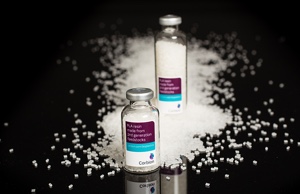
Corbion Purac has successfully made PLA (Poly Lactic Acid) bioplastic resin from second generation feedstocks. Second generation feedstocks are those which are not suitable for human consumption, and include plant-based materials like bagasse, corn stover, wheat straw and wood chips. Corbion Purac invites users of PLA to join a consortium to accelerate the market introduction of PLA resin made from alternative feedstocks.
Following an intensive research project, Corbion Purac has succeeded in producing high grade lactic acid from alternative feedstocks, from which PLA resin has been made. Today, first generation feedstocks such as industrial cane sugar, sugar beet, corn and cassava are used for producing lactic acid. They are grown following principles of sustainable agriculture and have a high yield per hectare of land used. These highly efficient feedstocks are – and will most likely remain – a good choice for lactic acid and PLA production. Corbion Purac is the first company in the world to have made PLA from second generation feedstocks, optimizing the lactic acid fermentation process to fit the special characteristics of the biomass. In the future, these alternative feedstocks can have a high impact on the biochemical and bioplastics industries.
In order to fully commercialize and bring PLA based on second generation feedstocks to the market in commercial quantities, significant R&D efforts are still needed. Corbion invites all interested brandowners and converters to contact us and join a consortium in order to accelerate the market introduction of second generation feedstock bioplastics.
Source
Corbion Purac, press release, 2015-09-30.
Supplier
Share
Renewable Carbon News – Daily Newsletter
Subscribe to our daily email newsletter – the world's leading newsletter on renewable materials and chemicals










